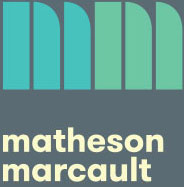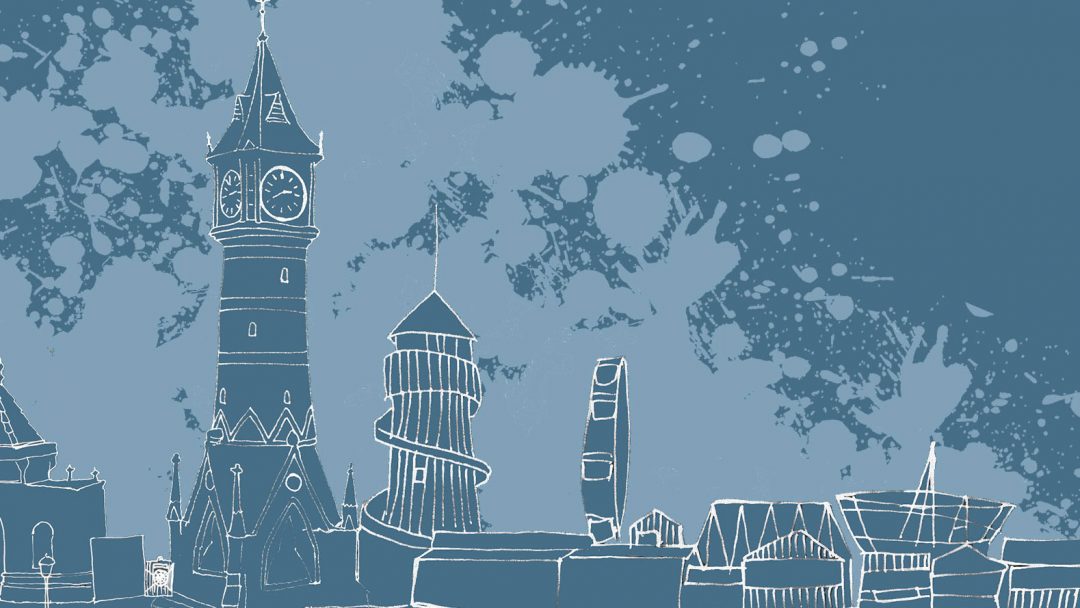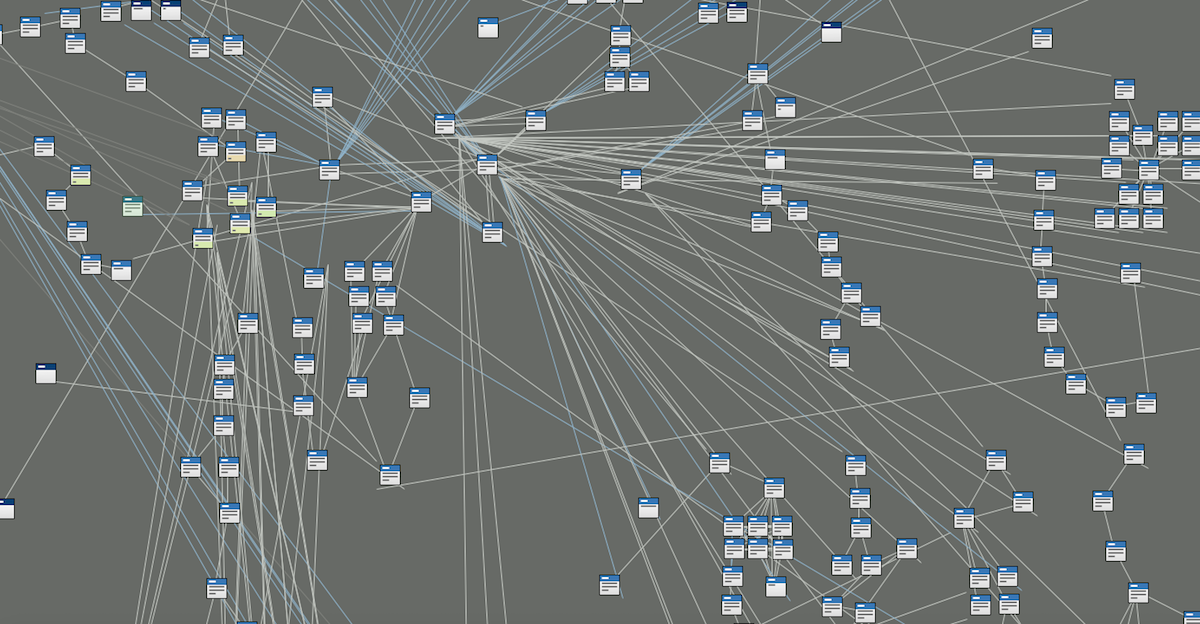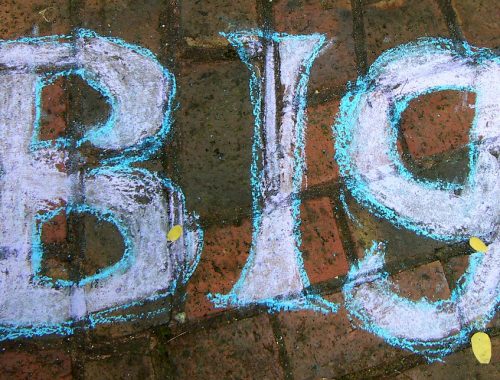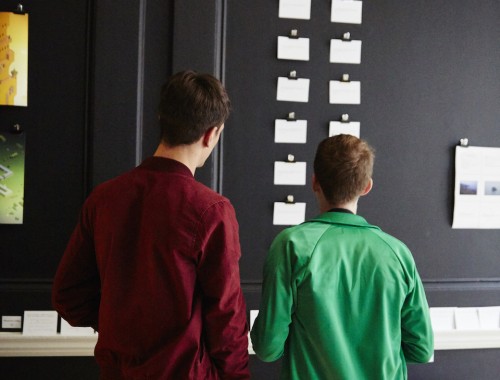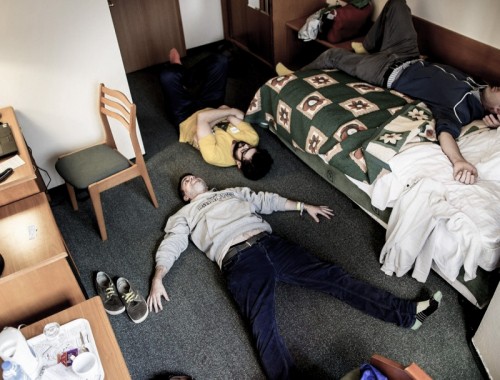We recently made a short game called One Night in Skegness, for the wonderful SO Festival.
It’s a Twine game, and it takes maybe 5-10 minutes to play. Which you can do now, it’s at that link above! Or here! (Better with your sound on, but it works fine without.)
It’s pretty simple, as a play experience. Your character travels between a few different places in Skegness, and visits a few different historical eras. There are some low-key adventures. There are a few jokes. There’s a robot, there’s mild peril, there’s a chance to change the future. If you’re lucky and careful, you’ll return to 2086 and see what changes your journey into the past made.
But we thought it might be interesting to write a little bit about the process of making a time travel game in Twine.
Our game has a SUPER simple structure. There’s Skegness, which you can visit in several different eras (the 1500s, 1880s, 1920s, 2010 and finally your home in 2086). There’s five or six core locations which you can move between – mostly the same locations in each time, so you can get a sense of how they change through Skegness’s history. And that’s pretty much it.
And yet, the mess of a map above. This game isn’t more complicated than other games we’ve built in Twine, it doesn’t have more passages, it just looks like more of a mess because there’s more connections between different passages, a less linear way of navigating the space. When we’ve used Twine before generally there’s been a sense of forward motion through a narrative, even if there are many branches and paths – in this case it’s a much more spatial arrangement that players pick their own path around.
In terms of practical Twine-building, this meant we put half a dozen passages at the heart of the game – the pier, the foreshore, the clocktower, and so on, with links to let people wander between them in a trad interactive fiction kind of way – and then called up a different version of their description depending on what time it was and whether you’d been to that place in that time before. (The “once” and “later” in Leon Arnott’s wonderful Replace macro set is SO GREAT for this, showing a different version of a passage the first time you visit it – in the past I hadn’t encountered it and spent a lot of straightforward but very tedious time setting and checking $ifVisitedBeehive variables).
Fortunately for us, most of the changes that you can make in One Night in Skegness can’t have huge immediate ramifications. There’s no way to paint the pier yellow in 1890 and then see it still a weird dirty mustard in the 1920s. The past of Skegness has already happened, after all, and the game represents that actual past – we didn’t want it to be actively misleading. So the changes that you make in the more distant past mostly play out only when you get back to 2086 – a time period we could be much freer with on account of it, y’know, not existing yet (there are a couple of exceptions, mostly around changes that are clearly very silly and that nobody is going to mistake for reality).
ADVENTURES
Each time period you can visit also has a couple of small-scale adventures branching off from particular time/locations. These adventures are very short, and much more like a traditional choose-your-own-adventure story fragment – you make a couple of choices, and then good or bad things happen. At the end of an adventure, you usually end up where you were when you started – a particular time, a particular place – and you can wander around in an open-ended way or go back to your machine and travel to a new time.
The adventures can result in a few different things:
- You change the past, and therefore the “present” (should you make it back to 2086) will be different as well
- You collect an object which you can potentially use in another adventure
- You get trapped in the past for ever – though most of the time that only happens if you’re really insistent on doing something silly
The non-linear nature of the exploration means there’s a lot of straightforward but very tedious writing: any time you can use an object, for example, we need to think about every object you might possibly have with you. This is, again, the sort of work that I assume people working in parser IF are very used to, but it’s not the kind of thing that’s come up for us while using Twine before.
ENDINGS
We wanted the game to take maybe ten minutes to play at most. We also wanted it to feel like there was a real ending with a chance of success, rather than just a sense of exhaustion from having run through all the possibilities (which was a risk with an early draft of the game). So we limited the use of your time machine. It’s narratively a pretty shonky time machine anyway, so that seemed to make sense.
It’s not a hard limit, a set number of turns. Instead, each time you travel, the machine degrades a little, and there’s a slowly increasing chance that it won’t work next time. If you have to use the machine in a hurry (say, because you’re running away from an angry crowd), the chances get even worse. So, you know – maybe you should get back to 2086 while you still can?
It’s difficult, but not impossible, to travel to all the different times (1500s, 1880s, 1920s and 2017). But you can’t waste any journeys. And you need to charge up your machine pretty well to start with – which brings us to the minigames.
MINIGAMES
Skegness, as a town, is just crammed full of entertainment history. Arcades, daredevils, competitions, sideshows, fortune tellers, rollercoasters – its history from the 1880s onwards is pretty much a summary of the history of seaside entertainment in England.
To acknowledge this, we wanted to include a few minigames as part of the overall work – tiny little puzzles or tests of reaction speed, like you might get on real arcade machines. Again, there are a ton of Twine macros that already exist that people have used to do this sort of different type of interaction with text – options which disappear if you aren’t quick enough to click them, choices that you can scroll through indefinitely.
We decided that your time machine would require a little game of whack-a-mole to power up, and that you’d be able to find a sideshow or an arcade machine that you can actually play in a couple of different eras. These are really, really simple games – click on something before it disappears, deduce the word in a Typeshift-inspired puzzle – but it was a lot of fun to think about what Twine is actually capable of in terms of non-narrative gameplay, just using its existing capabilities.
